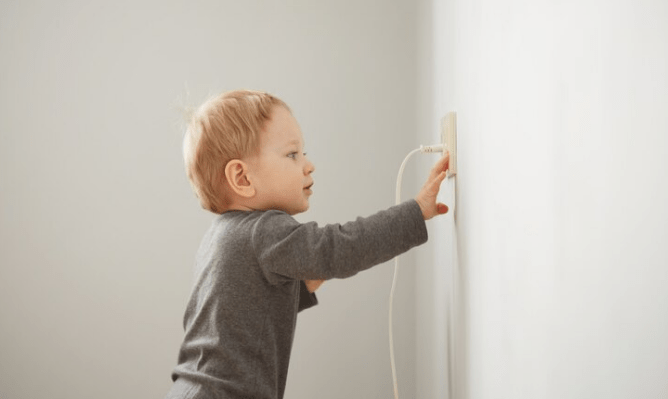It is very important to make sure child-safe environment. Safeguarding children from danger is only one part of child-friendly living. Another part is creating an environment where children can grow, learn, and play without having to take risks they don’t need to. This detailed guide will talk about many things that are important for keeping kids safe, like building a safe community, making sure kids are mentally safe, and taking safety steps at home.
Recognizing the Dependency on Child-Safe Housing
Kids are usually curious, and they don’t always know about the dangers around them. Children’s natural interest can put them in danger, even though it is an important part of how they learn. It is very important to give kids a safe place to live to protect their physical and mental health.
Physical Security at Home
To make your home childproof, start with the basics. For example, put up safety gates, place big furniture on the wall, and unplug safety outlets when they’re not in use. Keep things like medicines, cleaning tools, and sharp objects out of reach so that they can’t hurt anyone.
Suffocation and Sudden Infant Death Syndrome (SIDS) can be avoided by making sure babies have a safe place to sleep. A safe cot should have a firm mattress and no covers that hang down. Beds for bigger kids should be sturdy and right for their age.

To keep your kitchen safe, move the pot handles to the back of the stove instead of the front. Put away things that can break, tools, and hot food that people can reach. Think about safety latches for cabinets and drawers.
Bathroom Safety: Never leave a child in the bath alone, and make sure the water heater is set to a safe temperature to avoid burns. Toilet locks and mats that don’t slip can both help keep people from drowning.
not inside When kids play outside, make sure there aren’t any dangerous objects, poisonous plants, or open water sources. Playthings should always be new and right for the child’s age.
Psychological and Emotional Security
Encourage open communication by providing a setting in which kids feel comfortable sharing their ideas and emotions. Actively hear them out and acknowledge their feelings.
Regular schedules: Children benefit greatly from predictability and routine. Regular play, eating, and sleeping schedules can give children a sense of stability.
Positive Reinforcement: Instead of concentrating just on punishing wrongdoing, emphasize desired actions with praise and encouragement. This strategy promotes positive conduct and self-worth.
Monitoring the Media: Keep an eye on the media and technology your kids use. Set limits and make sure the content is safe for their age and doesn’t contain violence.
Teach kids about personal safety by telling them why personal space is important and the difference between “good touch” and “bad touch.” Let kids know they can say no and tell an adult they trust if they feel uncomfortable.
How to Stay Safe with Technology in the Digital Age 1. Internet Safety: Since kids can use the internet from a young age, it’s important to teach them about risks like cyberbullying and being a victim of criminals. Use tools like parental settings and keep an eye on your kids’ online activity to make sure they are safe in the digital world.
Make Safe Digital Habits: Teach your kids how to make safe digital habits, like knowing the signs of stalking, how to change their privacy settings, and how not to post personal information online.
Balanced Screen Time: Limit screen time to avoid overindulging, which can hurt sleep, exercise, and social skills. Encourage things to do that don’t involve screens and other things.
Environments for Education
Bully-Free Zones: Promote and back school regulations that forbid bullying. Children should be taught the value of kindness and how bullying affects classmates.
Inclusive Education: Provide backing to educational environments that accommodate every kid, including those with exceptional needs. In addition to ensuring safety, inclusive settings foster acceptance and understanding.
Learning Resources: Give kids access to age-and safety-appropriate educational resources that spark their interest and educate them without exposing them to inappropriate information.
Participation of the Community
Safe Play Spaces: Promote and assist in the creation of well-kept, kid-accessible, safe community play spaces.
Community Education: To create a community that is knowledgeable about safeguarding its youngest members, take part in or host courses on child safety, first aid, and emergency response.
Support Networks: Create or join groups where parents and caregivers can exchange resources, knowledge, and experiences.
Nutrition and Well-Being
Healthy Eating Routines: Promote and teach a healthy diet that satisfies all dietary requirements. Keep an eye out for small children who could choke, and instruct older kids on proper food preparation techniques.
Including Children’s Safety in Daily Life
Being child-safe goes beyond taking special precautions; it involves incorporating safety into all aspects of daily life. This calls for ongoing awareness of possible risks and chances to impart safety knowledge.

Daily Safety Procedures
Safety during Mealtime: Instruct kids in safe eating practices, such as chewing carefully and not running while holding food in their mouths.
Safe Transportation: Make use of the proper car seats and booster seats, and instruct kids on pedestrian laws and road safety.
Responsible Pet Interaction: Instruct kids on how to behave with pets in a safe manner by helping them to recognize their habits and show them space.
Safety and technology on the Internet
In this day and age of technology, keeping kids safe online is just as important as keeping them safe off-line.
Getting Around in the Digital World: To keep kids safe online, teach them how important privacy settings are and the risks that come with giving out personal information.
Set limits on how much time you spend in front of a screen to avoid overuse and keep a good balance with activities you can do away from your screen.
Mental Health and Being Able to Handle Stress
A child-safe setting not only helps kids’ mental and emotional health, it also teaches them how to deal with problems in life.
Getting stronger emotionally
Stress management: Teach kids the basics of awareness and deep breathing as ways to calm down.
Emotional Literacy: Help kids become emotionally intelligent by teaching them how to spot and talk about their feelings in a healthy way.
Safety Measures That Are Inclusive
Living in a kid-safe manner should be inclusive, meeting the various requirements of every child.
Meeting a Variety of Needs
Accessibility: Make sure that safety precautions take into account the needs of kids who have physical, sensory, or mental impairments.
Sensitivity to Culture: Recognize and be mindful of cultural customs and beliefs that may influence how you approach child protection.
Engagement with the Community and Advocacy
A child-safe environment involves the entire community in addition to the home.
Getting Involved in Community activities: Take part in or support neighborhood-based initiatives and activities for child safety.
Policy Advocacy: Encourage laws and policies that advance the welfare and safety of children.
Frequent Updates and Reviews of Safety
Safety precautions need to be reviewed and updated on a regular basis as children grow and their settings and technology change.
Keeping Up to Date: Conduct routine safety audits to check for possible new hazards in your house and daily activities.
Keeping Up to Date: Stay up to date on any new safety advice, goods, or innovations.
Teaching Kids to Be Aware of Safety
Enable kids to actively participate in their own safety by teaching them about potential hazards and safety precautions.
Active Learning Safety exercises: Carry out emergency exercises at home, such as earthquake and fire drills.
Ability to Make Decisions: Teach kids to make responsible decisions by modeling safe game and activity selection.
Establishing a Community of Support
Safety in Schools: Talk to the school about their safety procedures for your child-safe. Engage in classroom activities and keep lines of communication open with educators.
Neighborhood Watch: To guarantee a secure environment for all children, be informed of who resides in your neighborhood and establish a community watch program.
Emergency Readiness: Instruct kids about emergency protocols and crucial phone numbers. Regularly practice exercises for scenarios such as natural catastrophes or fires.
Obstacles and Things to Think About
Juggling Independence and Safety: While keeping kids safe is of utmost importance, it’s also critical to give them some freedom to explore and gain knowledge from their experiences. Finding the ideal balance is crucial.
Particular Requirements Kids: Children who struggle with their physical, mental, or developmental needs might need extra safety precautions and concerns.
Socioeconomic and cultural factors: Realize that depending on local customs and the resources at hand, child-safe living guidelines may need to be modified.
Conclusion
Living in a child-safe manner is a dynamic, continuous process that changes as your child gets older. It necessitates awareness, learning, and adjustment to novel situations and developmental phases. By taking action and making the environment safe and helpful, you may greatly reduce the risks for your child and give them a solid base for a long, healthy life.
Making a house child-friendly isn’t just about keeping accidents from happening; it’s also about giving kids a safe, caring place to grow and learn. Caregivers and parents can keep their kids safe and give them power by making smart choices based on what they know about basic safety in the home, at school, and in the community. The way we protect children must also change along with society, but we must always keep the younger and weakest people in mind.
We hope you found this information helpful in your journey to create a safer environment for your family. At GuardWell Safety, we understand that every home is unique, and so are your child-proofing needs. That’s why we offer a Free Child-Proofing Consultation tailored to your specific requirements. Let our experts help you identify potential hazards and provide personalized solutions to make your home a secure haven for your little ones. Book your free consultation today and take the first step towards peace of mind.






